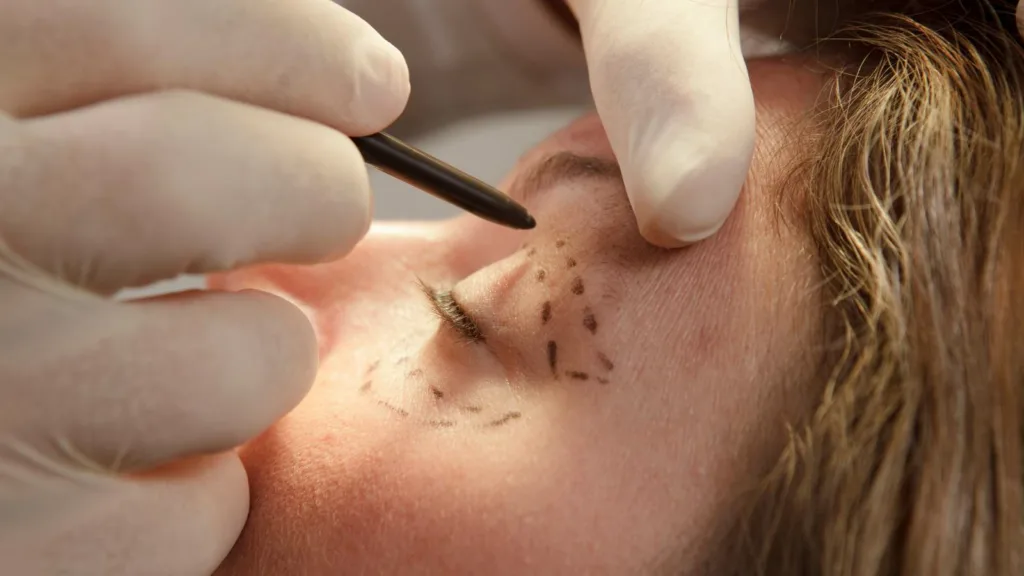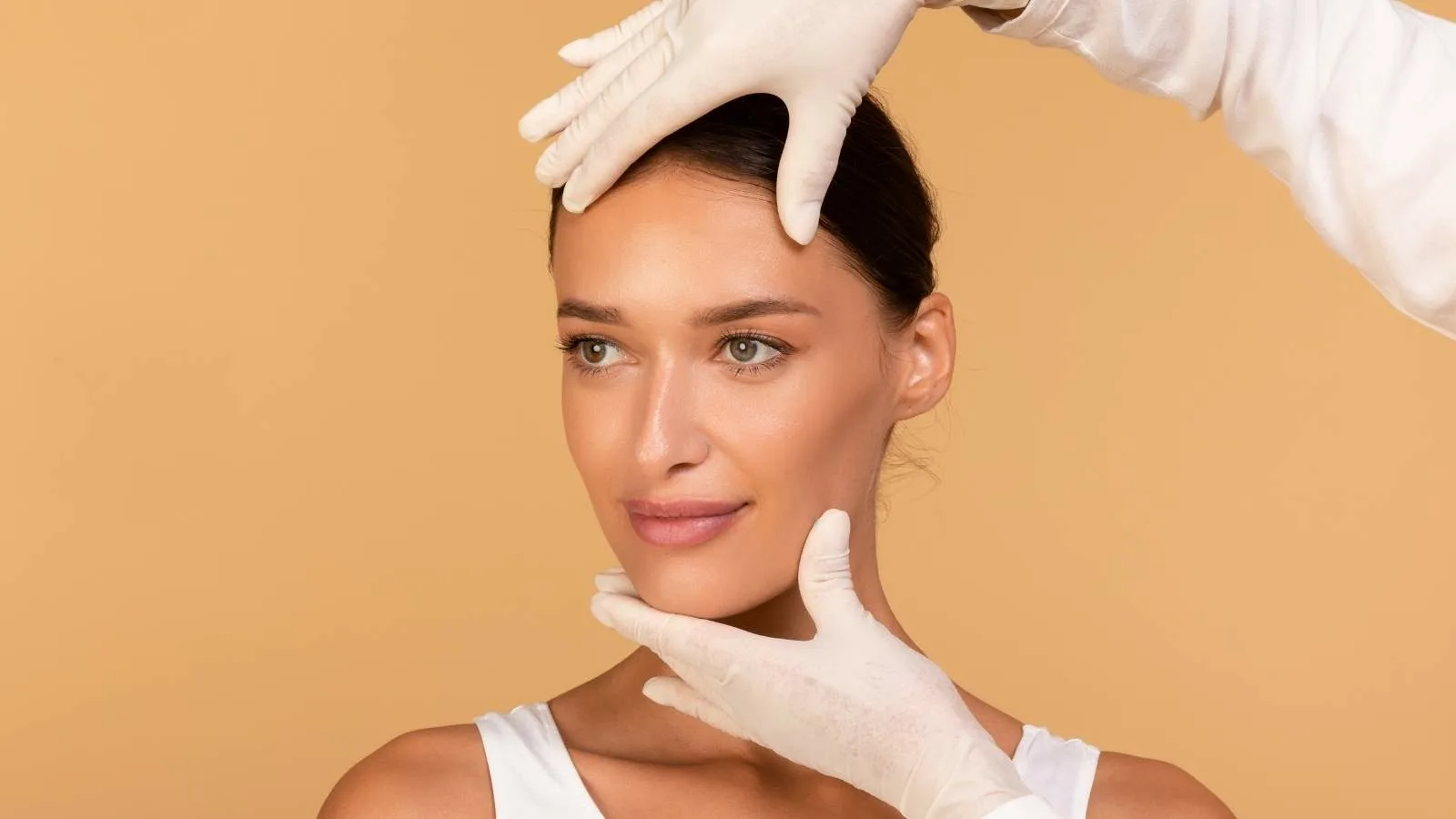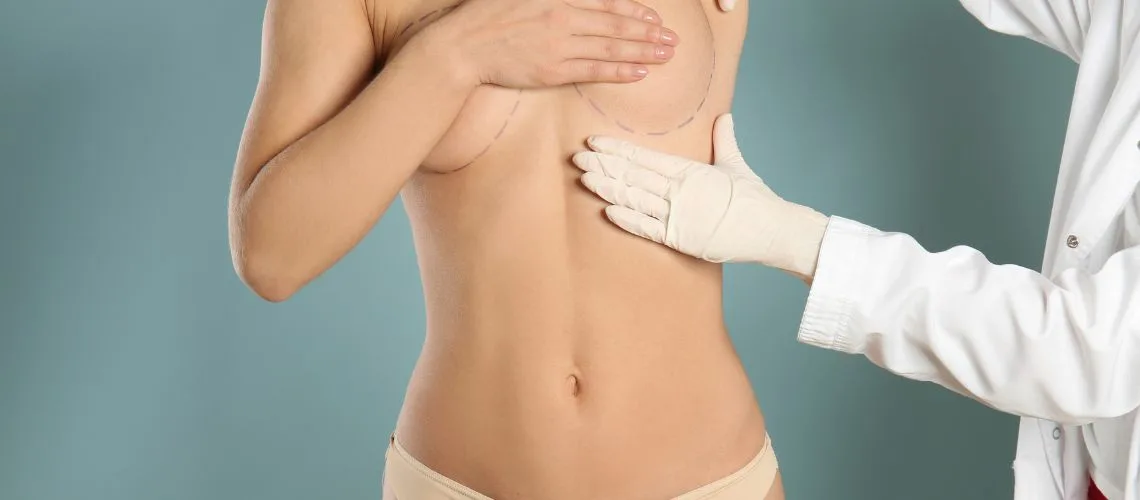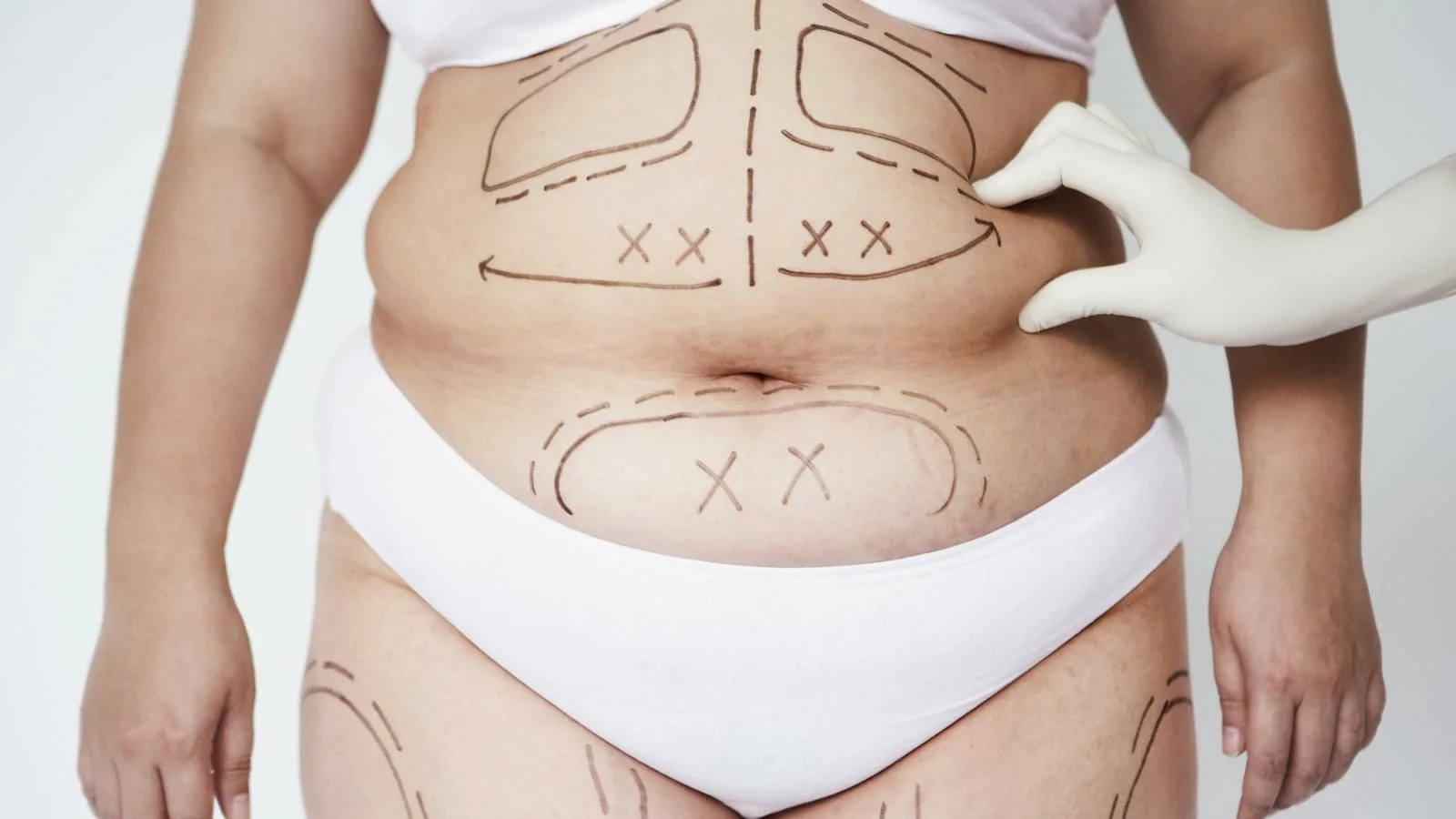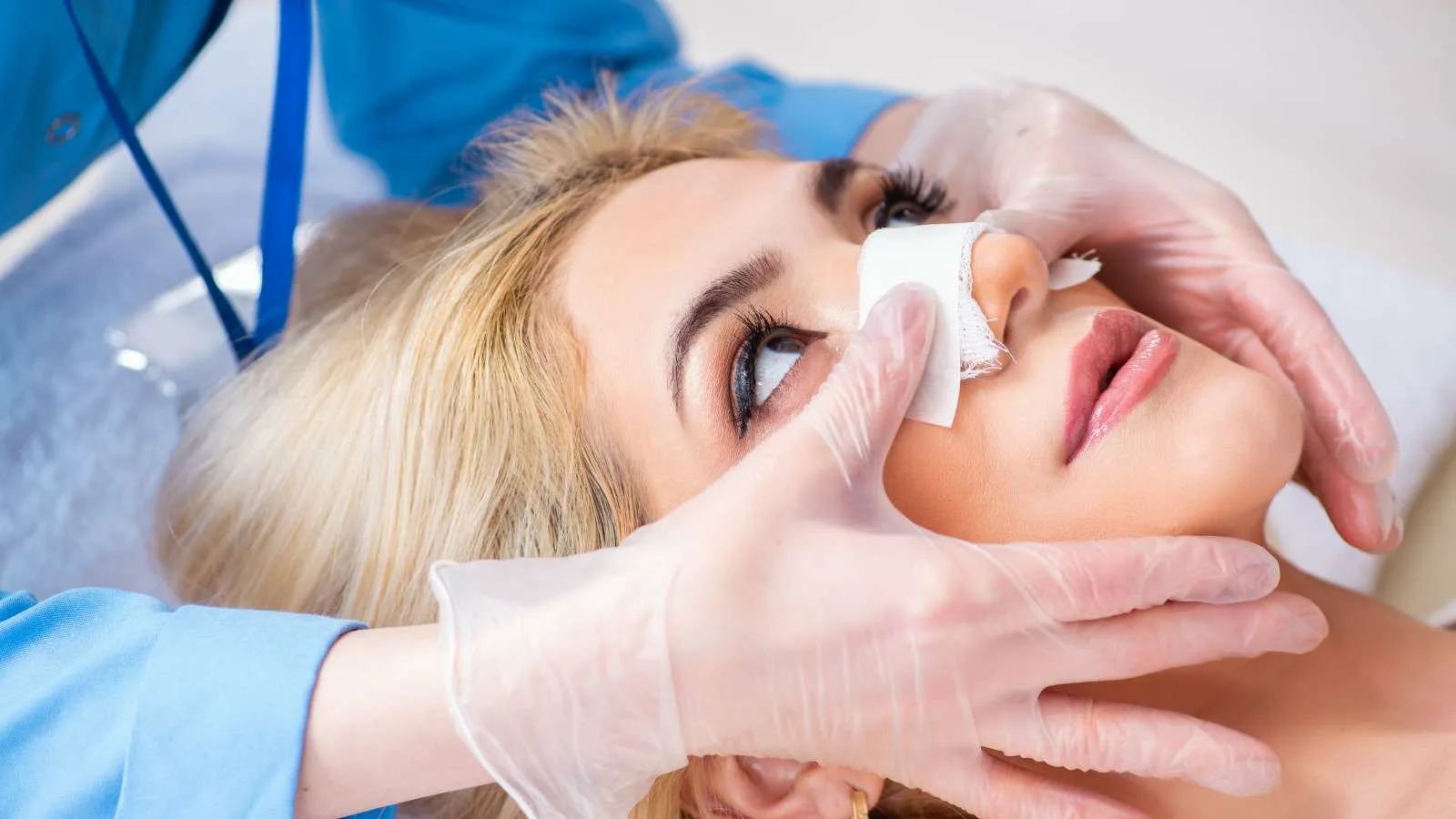Aesthetic addiction refers to compulsive and repeated pursuit of cosmetic procedures without medical necessity. Patients affected by this condition often seek constant changes, despite already satisfactory results.
True aesthetic addiction is frequently associated with psychological disorders. Body dysmorphic disorder, low self-esteem, and unrealistic expectations drive individuals to undergo unnecessary or excessive surgeries.
It is important to distinguish aesthetic addiction from regular aesthetic care. Choosing occasional treatments for age-related or structural concerns does not indicate an addictive pattern but a conscious health decision.
Preventing aesthetic addiction requires thorough psychological evaluation and professional guidance. Surgeons play a key role in identifying unhealthy motivations and redirecting patients toward supportive counseling when needed.
What Is Aesthetic Surgery Addiction?
Aesthetic surgery addiction is a behavioral addiction defined by the person never being fully satisfied with the changes made to their physical appearance and constantly wanting more. The key factor here is the deep dissatisfaction or anxiety in the person’s mental health, which they try to “fix” through their external appearance. Sometimes this situation becomes so intense that people undergo operations one after another, consult different doctors, and even switch to another specialist if a surgeon says, “That’s enough, we shouldn’t do any more procedures.”
This addictive behavior is often closely related to Body Dysmorphic Disorder (BDD). The person may perceive a minor detail on their body as a major defect and believe they cannot be at ease unless this defect is “corrected” by surgical or medical methods. However, despite repeated interventions, the person usually never reaches the “flawless” appearance they imagine; because the fundamental problem is not the minor imperfections reflected in the mirror but rather how the brain perceives and interprets those imperfections.
Like other addictions (e.g., substance or alcohol addiction), aesthetic surgery addiction is shaped around the urge to “keep going” and the inability to “stop.” When the first operation does not bring the expected happiness, the person believes they can achieve the desired result with a more aggressive or different procedure. When subsequent procedures also end in disappointment, the vicious cycle continues. This cycle can sometimes lead to severe mental breakdowns and problems in social life (such as decreased work efficiency, withdrawal from social circles, or financial difficulties).
To give a real-life example: Imagine you accidentally pour bleach on your favorite outfit while washing it. In an effort to save the clothing, you try various methods and sometimes attempt to repair it. However, if the result is not as you hoped, you keep making new “patches,” and eventually the outfit becomes unrecognizable. Aesthetic surgery addiction is similarly characterized by the effort to fix the problem once and for all, which gradually turns into an even greater predicament.
What Are the Symptoms of Aesthetic Surgery Addiction?
For someone to be classified as addicted to aesthetic surgery, we need to look at certain behavior and thought patterns. Of course, seeing just one symptom does not mean the person is addicted. However, if several signals appear together and chronically, it is important to consult a specialist.
Persistent Feelings of Inadequacy and Dissatisfaction
No matter what surgery or medical procedure the person undergoes, they are not satisfied with the result. Even if others say, “You look great,” there is an ongoing inner restlessness and sense of inadequacy. This may indicate a distorted body image.
Repeated Interventions in Quick Succession
Under normal circumstances, people need a long period of rest and recovery after a surgery. However, in the case of addiction, a new operation may be planned before the healing process is even complete. This rapid cycle suggests a pursuit of “immediate gratification” rather than psychological satisfaction.
Consulting Different Doctors and Concealing Procedures
When one surgeon deems a procedure inappropriate for ethical or medical reasons, the person may move on to another specialist to get the desired treatment. What’s noteworthy here is the tendency to hide or downplay all previous surgeries. Most aesthetic surgeons, due to patient safety and ethical standards, prioritize avoiding “unnecessary interventions.”
Excessive Financial and Social Difficulties
Those with aesthetic addiction may spend large sums of money on procedures. They can end up in debt, take out loans, or cut back on other expenses, leading to financial problems. They may also avoid social settings due to their obsessions with their face and body, experience reduced work performance, or have strained relationships.
Psychological Symptoms: Anxiety, Depression, and Aggression
When the person cannot undergo the operation they want or finds the outcome far from what they expected, it is common for them to experience intense anxiety, sadness, or even outbursts of anger. Obstructing the desire for surgery can feel like an “existential threat,” eliciting highly emotional reactions.
Unrealistic Expectations
“If I get this surgery, all my problems will disappear,” or “Once these wrinkles are gone, people’s perception of me will completely change,” are thoughts that can be a warning sign. Changing one’s physical appearance alone does not solve deep-seated psychological or social problems; if the approach isn’t grounded in realistic expectations, disappointment is inevitable.
Is Body Dysmorphic Disorder Related to This Addiction?
Body Dysmorphic Disorder (BDD) is a psychological disorder characterized by an obsessive focus on a perceived or actual physical flaw. Individuals living with this disorder may incessantly scrutinize what they see as a “defect” on their body, experience intense anxiety about it, and resort to extreme measures to hide or fix the “defect.”
BDD is strongly linked to aesthetic addiction. People with BDD may perceive a small skin blemish as a huge defect, or a slight curvature in their nose as a serious facial deformity. Consequently, this misperception fosters a profound sense of “self-dislike,” leading them to feel compelled to seek repeated aesthetic interventions. However, surgeries or aesthetic procedures rarely bring true satisfaction; the issue lies not in the body’s minor flaws but in the individual’s perception and thought processes.
Key points that connect BDD and aesthetic addiction are:
Distorted Perception: Exaggerating even normal or negligible physical attributes into “catastrophes.”
Repetitive Thought Patterns: Constant worry about the same area, spending hours in front of the mirror, or sometimes avoiding mirrors altogether.
Repeated Desire for Intervention: Trying to eliminate this “defect” through either surgical or other means.
Cycle of Dissatisfaction: Even if there is a brief relief after a new procedure, attention quickly shifts to another flaw or a lingering imperfection in the same area.
For instance, someone who has a slight hump on their nose may believe that everyone around them only sees that hump and that it makes them “ugly” or “inadequate.” This person, even after undergoing one or multiple rhinoplasty procedures, still cannot achieve the desired result because the “bar for perfection” in their mind is set so high it can never be met. Therefore, BDD is considered both a potential trigger and a key companion to aesthetic addiction.
Some studies indicate that a certain percentage of patients seeking aesthetic surgery show signs of BDD. However, it would be incorrect to say that every aesthetic surgery patient has BDD. What matters is understanding the underlying motivation behind the request for surgery and ensuring that mental health support is available when needed.
What Role Does Social Pressure Play in Aesthetic Addiction?
Society, particularly the media, wields a strong influence in shaping perceptions of beauty. Advertisements, films, social media platforms, and even traditional media often highlight a perfect, flawless body image. This can be a trigger for individuals who already feel insecure about their appearance. Messages like “This is the body the society accepts” place significant pressure on those who tie their self-worth to their outward appearance.
Social media, in particular, is full of filtered or photoshopped images. When someone compares themselves to the “smooth” faces and “ideal” bodies they see on their screen, their grasp on reality can become distorted. Most influencers or celebrities use unnatural lighting, angles, and edits in their photos. Yet individuals who aren’t aware of or tend to forget this reality, constantly magnify their own physical flaws and think, “I should be like them,” prompting them to seek aesthetic procedures.
Historical Changes in Beauty Standards: At one time, a fuller body shape was deemed admirable, while in another era, extreme thinness was celebrated. These standards also vary from one society to another. For instance, certain Asian countries may value very different ideals (larger eyes, fair skin, etc.) than what is highlighted in the West.
Gender Roles: For a long time, aesthetic surgery was mostly associated with women, as societal pressure on women’s external appearance was more intense. However, in recent years, men have been experiencing similar pressures and are showing more interest in aesthetic procedures. This shift goes beyond the old question, “Do men also want to look more beautiful?” and draws people from all walks of life to the aesthetic market.
Economic and Cultural Factors: In some regions, aesthetic surgery is seen as a “status symbol.” By saying “I can afford aesthetic procedures,” the individual is also signaling their social class. Additionally, for special occasions such as weddings or graduations, gifting aesthetic procedures or making them a routine practice can also occur.
All these societal pressures feed the notion “I must do it, or I won’t look valuable” in those who already have a fragile sense of self. Thus, it fuels the drive for intervention in individuals with a potential for addiction. In short, society and the media effectively serve as an “amplifier” for aesthetic addiction.
Are There Psychological Triggers Behind This Obsession?
Many cases of aesthetic addiction involve underlying or co-occurring psychological triggers. These triggers often stem from experiences in childhood or adolescence. For example, someone who was teased or criticized for their appearance from a young age might believe that fixing their appearance in adulthood will heal all those emotional scars.
Some individuals have more anxious or sensitive personalities than others. These people may experience extreme worry about body image. A small flaw can cause major anxiety because they fear it will be perceived differently by others. They may feel the only way to reduce this anxiety is by undergoing multiple surgeries.
Traumatic events, bullying, or emotional neglect experienced in social settings can make individuals feel inadequate and worthless. Such feelings trigger the hope that aesthetic intervention can provide a “new beginning.” The person believes they can escape past traumas by altering their body.
For some, the pursuit of perfection extends beyond physical appearance to every aspect of life. This internal drive is also visible in aesthetic procedures. “The tip of my nose must be a bit more lifted, my eyelid must be more symmetrical,” and other endless requests often originate from insatiable perfectionism.
The brain releases dopamine when someone receives compliments or admiration following an aesthetic procedure or intervention. This creates feelings of pleasure and reward, but these can be temporary. Like excessive shopping or gambling addiction, a person seeks new procedures to recapture this feeling.
For some, the body becomes the only area they feel they can control. A lack of control in work or family life may push them to establish dominance over their body. “At least I can shape my body as I wish” can manifest in repeated aesthetic interventions.
How Do Unrealistic Expectations Fuel Surgical Addiction?
Expecting miracles from aesthetic surgery or medical aesthetic procedures is one of the main reasons for disappointment. Every surgery and procedure has certain limits, risks, and chances of failure. However, if a person does not know or ignores these limits, the dream of a “miraculous transformation” quickly morphs into a never-ending search for fulfillment.
“The Belief That My Life Will Completely Change”: It is very common for someone who has corrected their nose or removed wrinkles to believe their relationship problems or career struggles will also be resolved. In reality, an aesthetic intervention offers a temporary sense of relief in a person’s self-concept but does not guarantee profound changes in other areas of life.
Excessive Photo Filters and Misleading Before-and-After Images: Some advertisements or social media posts present the outcomes of procedures in an exaggerated manner. This leads people to think, “I will look just as wonderful.” In reality, many factors—individual differences, tissue characteristics, surgical technique, and how one’s body heals—affect the final outcome.
Constant Comparison: Seeing a friend’s lip fillers and thinking they look beautiful might make someone else assume they will have the same result. Yet everyone’s facial structure, skin thickness, and genetic traits differ. Thus, something that looks “perfect” on one person may not yield the same effect on another.
Dissatisfaction That Reinforces Procedure Addiction: If the person does not achieve the “wow effect” they were expecting post-surgery, they may think, “Perhaps I should add another procedure” or “I should try a more radical approach.” If they still do not reach their idea of perfection after the second or third procedure, the vicious cycle continues.
What Are the Risks of Repeated Aesthetic Procedures?
Aesthetic surgery addiction not only poses psychological or social dangers but also threatens physical health. Every surgical procedure carries a certain level of risk, and as these risks accumulate, they tend to increase.
Infection and Wound Healing Problems
The more frequently a surgery is performed, the more trauma the tissues endure. Repeated interventions can overwhelm the body’s ability to heal. The skin may become overly sensitive, leaving permanent scars or wounds that do not heal properly. Some patients may experience severe tissue loss or deformation.
Anesthesia-Related Complications
Receiving anesthesia during surgery is a serious risk. Each additional surgery increases the chance of anesthesia-related complications. These can include heart problems, respiratory difficulties, and, albeit rarely, severe reactions tied to anesthesia.
Distortion of Body Proportions
Especially when procedures like liposuction, breast augmentation, or breast reduction are repeated, the body can become disproportionate, or tissues may form in unpredictable ways. It is quite common for one area being “fixed” to result in deformation in another.
Financial and Psychological Burden
Undergoing continual surgery not only strains the body but also the wallet. Hospital stays, medications, and procedure costs can accumulate. The individual may fall into debt and experience chronic anxiety each time: “Will it work this time?” Unexpected outcomes or disappointments after surgery can trigger depression.
Irreversible Aesthetic Damage
Too many operations can leave scars, asymmetry, or irreversible damage to tissues. For example, multiple facelift procedures can over-tighten the skin, leading to a loss of facial expressions or a “frozen” look.
Misguidance or Unethical Behavior by Surgeons
Some practitioners may ignore a patient’s real needs and ethics to approve every requested procedure for financial gain. This is especially dangerous for someone suffering from addiction, as it draws them deeper into the cycle. A surgeon’s “I’ll do whatever is asked” approach fails to consider underlying psychological issues and carries significant risks.
Can Therapy Help Overcome Aesthetic Surgery Addiction?
Although aesthetic surgery addiction may appear to focus solely on external appearance, it is fundamentally a problem with strong psychological and emotional dimensions. Therefore, therapeutic methods, particularly Cognitive Behavioral Therapy (CBT), are very effective in this field. CBT aims to examine and change a person’s thought patterns and behavioral routines. Irrational thoughts such as “No one will love me because my nose is crooked” can be replaced with healthier beliefs during therapy.
Discovering the Emotional Roots of the Issue: Some clients are unaware of the emotional voids behind their aesthetic addiction when they first seek treatment. Therapy, especially concerning past traumas, loss of self-confidence, and perfectionist tendencies, offers an opportunity to identify these issues.
Developing Coping Strategies: People who use aesthetic procedures like a “medicine” may feel that repeated surgeries are the only way to handle their anxiety or depression. Therapy helps them acquire healthier coping strategies. For instance, they can learn alternative methods such as meditation, breathing exercises, or joining support groups to deal with anxiety.
Support Groups and Other Therapies: In addition to CBT, methods like Dialectical Behavior Therapy (DBT) can be effective in emotional regulation. Also, support groups for individuals struggling with similar issues can reinforce the feeling that “I am not alone,” reducing guilt or shame.
Medication: In some cases, especially when accompanied by BDD or severe depression, psychiatrists may recommend antidepressants or anxiolytics. Selective Serotonin Reuptake Inhibitors (SSRIs) can help reduce obsessive thoughts.
Is There a Definitive Cure for Body Dysmorphic Disorder?
Body Dysmorphic Disorder (BDD) is classified as a chronic psychological disorder. There is currently no miraculous drug or procedure to eliminate it completely. However, this does not mean that BDD cannot be treated. Many people can effectively control their symptoms and improve their quality of life with the right treatment.
Cognitive Behavioral Therapy (CBT): One of the cornerstones of BDD treatment, especially using specialized protocols that focus on body image. Techniques such as limiting time spent in front of the mirror and challenging negative thought patterns can alleviate BDD symptoms.
Medication: Antidepressants from the SSRI family can be effective in managing the obsessive-compulsive side of BDD. They help regulate chemical imbalances in the brain and break the cycle of obsessive thinking.
Support Groups and Family Support: Individuals with BDD often hesitate to open up to those around them. However, joining support groups or participating in family therapy can reduce feelings of isolation. Support and understanding from close ones are invaluable for maintaining motivation to continue treatment.
Avoiding Surgical Intervention: BDD patients frequently turn to aesthetic operations. However, expert opinion generally holds that “Surgery is not the solution and may even worsen the condition.” Since BDD is more about a distortion of perception than a physical flaw, surgery usually does not eliminate dissatisfaction; it can even generate new anxieties.
How Do We Distinguish Self-Improvement from Addiction?
If someone stands in front of the mirror and thinks, “I’d feel better if my nose were a bit straighter,” and this desire is part of a sensible change that will make them happier, labeling it as addiction would be unfair. Self-improvement is a process in which a person aims to become better in one or several areas, feel healthier, or gain confidence. The goal is a limited intervention or lifestyle change guided by realistic expectations.
Motivation: The main motivation in self-improvement is to enhance overall well-being. In aesthetic addiction, the motivation stems from a never-ending loop of “more beautiful, thinner, younger.” The person cannot predict where or when they’ll be satisfied.
Realistic Expectations and Boundaries: For example, “My drooping eyelid made me look tired, so I got surgery and now I feel more refreshed” may be considered a self-improvement decision. But a thought sequence like “I fixed my eyelid, now I definitely have to fix my nose, and that’s still not enough, my eyebrows are awful…” signals a possible path to addiction.
Emotional Stability: Those on a path of self-improvement react more calmly to small setbacks or unexpected results. Those displaying addiction, however, can experience intense anger or despair if any complication arises during surgery or the outcome is not what they imagined, and immediately look for a new plan.
Need for External Validation: In addiction, the person constantly seeks approval from others because their sense of self-worth is fragile. An individual improving themselves, on the other hand, may say, “It’s most important that I feel good,” showing a more autonomous stance.
Time and Financial Resource Management: Reasonable aesthetic procedures or self-improvement efforts do not consume all of one’s budget or time. Someone addicted to aesthetic interventions might spend exorbitantly, neglect family and social life, and constantly plan new procedures.
There is a fine line between these two extremes, and sometimes the individual themselves may not know where to stop. Here is where surgeons and mental health professionals step in. In a healthy process, doctors evaluate patients’ expectations, set realistic guidelines, and monitor for potential psychological risks. If there are signs of addiction, referring the patient for psychological support before proceeding is the best step.
What Are the Ethical Responsibilities of Surgeons?
Surgeons working in the field of aesthetic surgery must adopt an approach that protects not only the physical needs of the patient but also their mental well-being. Professional organizations and international guidelines place significant ethical responsibilities on surgeons:
Not every patient is necessarily a suitable candidate for surgery. If a person’s request for an aesthetic procedure reflects an underlying mental health issue, a psychological evaluation should be recommended first. If there is suspicion of body dysmorphic disorder or aesthetic addiction, the surgeon has the right—and responsibility—to refuse or postpone surgery.
Patients must be clearly informed about the risks of the planned procedure, the recovery period, and the potential outcomes. If a patient has unrealistic expectations, such as “If I have this procedure, my whole life will change,” it is ethically incumbent upon the surgeon to correct these misconceptions through proper explanation.
Surgeons approving every requested procedure or encouraging patients for unnecessary interventions to earn more money is ethically unacceptable. This is especially dangerous for patients with aesthetic addiction and further entrenches their compulsive behavior.
Medicine is a constantly evolving field. Surgeons have a responsibility to keep pace with new techniques, equipment, and practices, and to stay informed about current scientific literature. Ensuring patient safety and the best possible outcomes is a core ethical obligation.
Aesthetic surgery sometimes involves private and sensitive areas or reveals the patient’s psychological history. Safeguarding this information and respecting patient confidentiality is mandatory. Sharing before-and-after photos on social media without the patient’s consent is a serious ethical violation.
In some cases, lifestyle changes such as diet and exercise or medical aesthetic treatments may be more appropriate than surgery. Surgeons should present these alternatives so that patients can make an informed and autonomous decision.
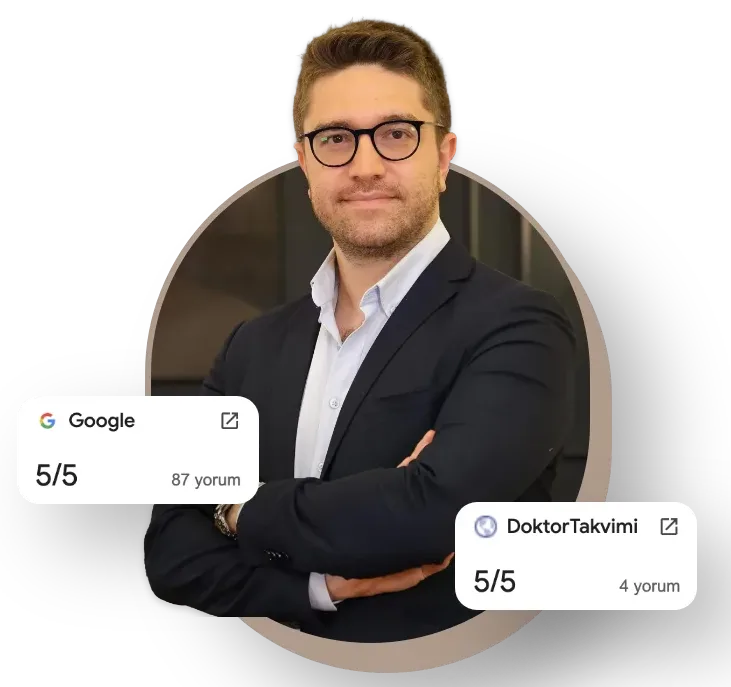
Op. Dr. Erman Ak is an internationally experienced specialist known for facial, breast, and body contouring surgeries in the field of aesthetic surgery. With his natural result–oriented surgical philosophy, modern techniques, and artistic vision, he is among the leading names in aesthetic surgery in Türkiye. A graduate of Hacettepe University Faculty of Medicine, Dr. Ak completed his residency at the Istanbul University Çapa Faculty of Medicine, Department of Plastic, Reconstructive and Aesthetic Surgery.
During his training, he received advanced microsurgery education from Prof. Dr. Fu Chan Wei at the Taiwan Chang Gung Memorial Hospital and was awarded the European Aesthetic Plastic Surgery Qualification by the European Board of Plastic Surgery (EBOPRAS). He also conducted advanced studies on facial and breast aesthetics as an ISAPS fellow at the Villa Bella Clinic (Italy) with Prof. Dr. Giovanni and Chiara Botti.
Op. Dr. Erman Ak approaches aesthetic surgery as a personalized art, tailoring each patient’s treatment according to facial proportions, skin structure, and natural aesthetic harmony. His expertise includes deep-plane face and neck lift, lip lift, buccal fat removal (bichectomy), breast augmentation and lifting, abdominoplasty, liposuction, BBL, and mommy makeover. He currently provides safe, natural, and holistic aesthetic treatments using modern techniques in his private clinic in Istanbul.

